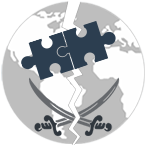In an article posted on the website of the Nation of Islam, headed by Minister Louis Farrakhan, Council on American Islamic Relations (CAIR) board member Parvez Ahmed made a number of statements which illustrate three of the four rhetorical tactics commonly used by the global Muslim Brotherhood when discussing terrorism. As discussed extensively in an earlier post, the first tactic is to insist that Islam as a religion has any connection to violence or terrorism, blurring the distinction between Islam as a religion and Islamism as a political movement. As Dr. Ahmed states in the article:
The tactic of terrorism—and yes it is a tactic, not an ideology—has been deployed by a multitude of groups of different religions, ethnicities and ideologies and yet the Islamic faith, unlike any other, is erroneously and incessantly associated with terrorism…“Between 1980 and 2003, the Liberation Tigers of Tamil Eelan, a group that recruits from the predominantly Hindu Tamil population in Sri Lanka and whose ideology is intertwined with Marxism, was the world’s leader in suicide terrorism. Despite this, Islamic groups receive the most attention in the Western media…
The second tactic is a misrepresentation of the nature of Jihad as “freedom fighting” which is not mentioned here but the third tactic is the defense of violence carried out by Islamist groups, a defense which follows the freedom fighting theme and which asserts that Islamist violence is based on “legitimate grievances. As Dr. Ahmed explains:
Suicide bombings are the product of modern political violence. Suicide bombings by Muslims are not the result of any Islamic ideology, but rather they are the result of the sociopolitical conditions of occupations (such as Palestine, Chechnya and Iraq) and the outcome of proxy wars fought in Afghanistan, where America not only armed the mujihadeen, but also enabled a culture of drugs and violence,” he said. Dr. Ahmed also noted that terrorism is a word generally applied to “one’s enemies or those with whom one disagrees.” “Hence the decision to call someone or label some organization ‘terrorist’ becomes almost unavoidably subjective, depending largely on whether one sympathizes with or opposes the person/group/cause concerned,” he said….“If one identifies with the victim of the violence, for example, then the act is terrorism. If, however, one identifies with the perpetrator, the violent act is regarded in a more sympathetic, if not positive (or worst, an ambivalent) light; and is not terrorism…
The final tactic is the obstruction of counter-terror efforts, often based on the assertion that such efforts are directed against Muslims. As the article notes:
Dr. Ahmed explained that right after 9/11 World Trade Center attacks, the federal government subjected 80,000 Arab and Muslim immigrants to fingerprinting and registration, sought out 8,000 Arab and Muslim men for FBI interviews and imprisoned over 5,000 foreign nationals in anti-terrorism preventive detention compounds.“These arrests and detentions did not result in the conviction of a single person for a terrorist crime. Thus the U.S. government’s record for the largest ethnic profiling campaign stood at 0 for 93,000,” he said.
The most extreme of such obstruction efforts is the claim that counter-terror actions are, in fact, a “war against Islam, a claim which Dr. Ahmed implies when he says:
The association of a faith practiced by 1.2 billion people worldwide to terrorism creates the perception that the GWOT is a war against Islam.
As the earlier post discussed, the Muslim Brotherhood public relations strategy regarding terrorism should be seen for what it is, a remarkably consistent and internally coherent means of obscuring the true aims and goals of the group. Interestingly, the Nation of Islam article also cites the remarks of Dr. Douglas Johnston of the International Center for Religion and Diplomacy (ICRD):
In all aspects of this war we need a position of humility noting our own actions of the past,” said Dr. Douglas Johnston, of the International Center for Religion and Diplomacy. “They (violent groups) are using scripture out of context. Religious legitimacy trumps everything. The answer to bad theology is good theology. “One person, one vote was the last thing on people’s minds in Iraq. They wanted the ability to practice their religion. We missed the bet by not having religious leaders at the table. They’re deemed as being absolutists and not willing to negotiate. We have to deal with the religious leaders. They are the moral authority. They have to feel ownership because they have unrivaled influence at the grassroots level.
Previous posts have discussed the role of the ICRD in helping to create a coalition of U.S. Muslim Brotherhood groups aimed at creating partnerships with the U.S. government. CAIR is one of the groups that is part of this coalition.
It is important to note that Dr. Ahmed’s remarks omit any mention of ideology as a motivation for terrorism, choosing instead to place the blame on ” sociopolitical conditions of occupations” which is in line with the global Muslim Brotherhood doctrine of “defensive jihad”, which allows for jihad in areas where Muslims are deemed to be under threat. In the case of Afghanistan where no such occupation is present, Dr. Ahmed invents a novel new claim- that terrorism there was the result of a “culture of drugs and violence” which he blamed on the U.S. The Brotherhood public relations strategy with respect to terrorism, as exemplified in the four rhetorical tactics, would appear to be an important means of facilitating the desired partnerships with the U.S. and other governments.
